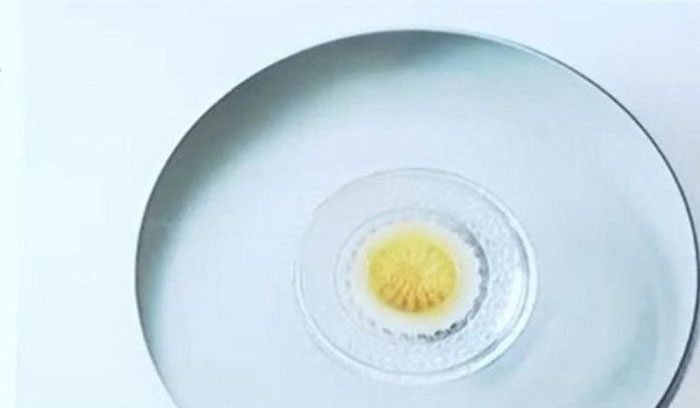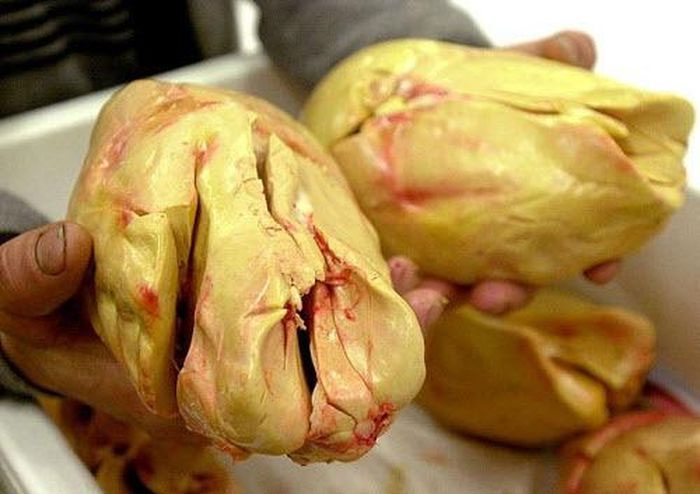Recently, in Japan, a biotechnology company introduced a special kind of foie gras that is completely artificial and produced in a laboratory. This artificial foie gras was then prepared and tested in a dish to evaluate and compare it with the original ingredient.
Specifically, the artificial foie gras was used in a French-style egg tart, and 15 diners were invited to taste this dish. Their feedback indicated that the flavor of the artificial foie gras closely resembles that of real foie gras. The artificial foie gras is produced using liver cell cultivation technology derived from ducks.

Artificial foie gras produced in a laboratory in Japan.
The biotechnology company reported that currently, the production cost for just 100 grams of artificial foie gras reaches up to $200, equivalent to over 4.7 million VND. The company’s goal is to significantly reduce production costs and be ready to supply the market when regulations regarding lab-grown meat are implemented in Japan. The successful testing of this artificial foie gras could pave the way for a new culinary branch, replacing traditional foie gras, which is opposed in many countries due to the cruel methods of raising geese for their liver.
In 2022, the New York City Council in the United States passed a bill banning restaurants and businesses from serving foie gras. This bill was set to be signed into law by New York Mayor Bill de Blasio. Specifically, the administration will prohibit the sale, serving, or preparation of this dish starting in 2022. Violators may face fines ranging from $500 to $2,000 per incident, equivalent to 11 to 46 million VND.

The cruel methods used to raise geese for foie gras. (Illustration).
Foie gras is considered one of the most exquisite dishes, even revered as “divine” in culinary circles due to its incredibly rich, buttery flavor and silky texture… This dish is typically served in high-end restaurants and appears on lists of the world’s most expensive foods. However, to produce this fatty liver, geese are subjected to brutal feeding methods. Three times a day, farmers forcibly open the birds’ mouths and insert feeding tubes into their throats to pour in over 2 kg of grain each time. This force-feeding causes the liver to accumulate fat, enlarging it up to ten times the size of a normal goose liver. Consequently, the obese liver makes it difficult for the geese to breathe and move. Moreover, during the raising process, these unfortunate geese are confined to small cages, barely able to move.
According to Newsweek, the geese in a foie gras farm appear “disheveled” and “often suffer from foot infections due to standing on metal grates during the tube feeding process.” Additionally, they frequently experience esophageal injuries from the excessive food forced down their throats, broken breastbones, fungal infections, diarrhea, liver dysfunction, and extreme stress. Some geese die from pneumonia or choking on the grains.
While foie gras is an incredibly appealing dish, the raising process has been deemed too cruel by many animal rights organizations. Before New York, California had already banned the sale of foie gras since 2012. Other countries around the world, such as the UK, Argentina, India, and Israel, have also implemented bans on the consumption of this luxurious dish.


















































